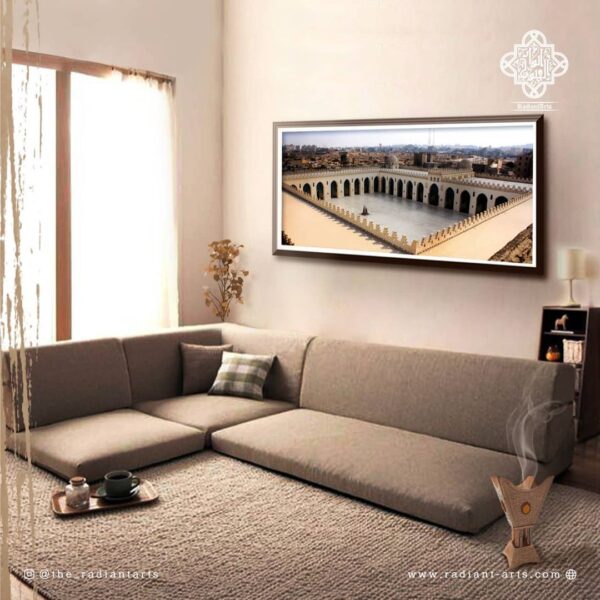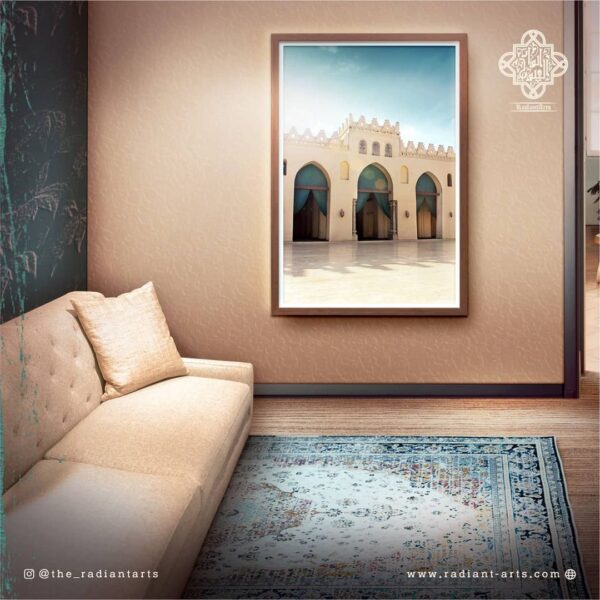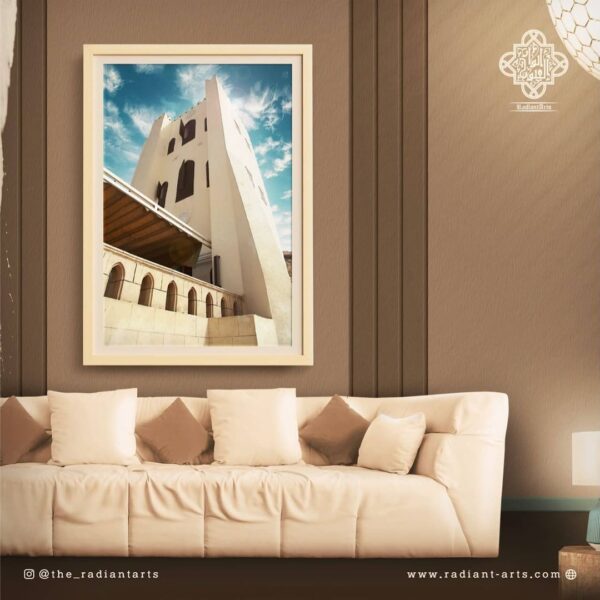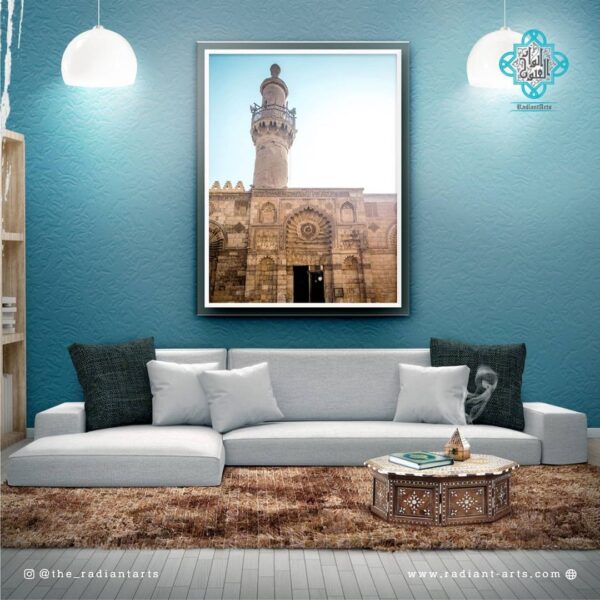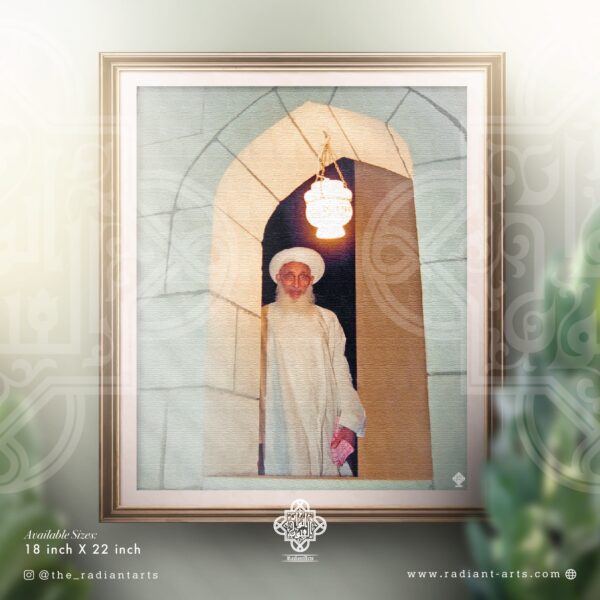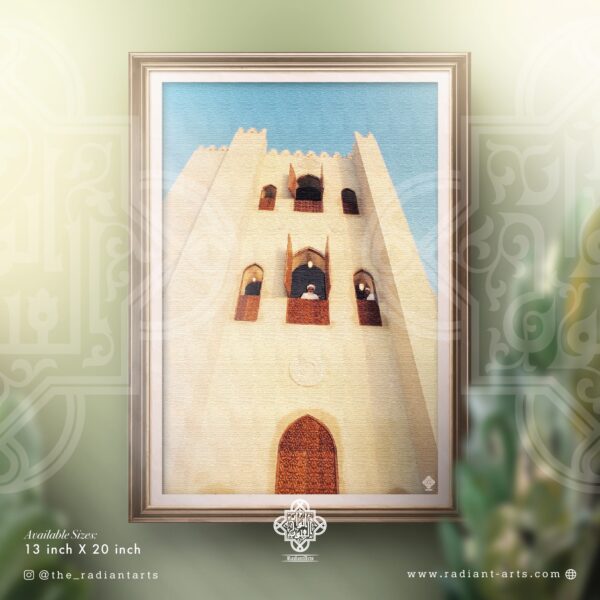JFRA 1 Jame al Anwar
₹8,000.00 – ₹15,000.00
Photographer: Sh Qusai Malindiwala
0 Reviews Write a review
₹8,000.00 – ₹15,000.00
JFRA 10 Jame al Anwar
₹8,000.00 – ₹15,000.00
As the custodian of Fatimi culture and thought, al-Dai al-Ajal Syedna Mohammed Burhanuddin RA provided the philosophical basis for the architectural restoration of al-Jami al-Anwar, and made key decisions pertaining to its structure during his numerous visits. The restoration reflected not only principles of Fatimi architecture in its physical form, but also its spiritual—the science that elevates and shapes the soul.
Throughout the entire project, Syedna Mohammed Burhanuddin’s RA detailed instructions and deep insight helped overcome the many hurdles that were faced. His leadership was inspiring, his vision enlightening. The ultimate purpose in restoring al-Jami al-Anwar was to revive it as a place of worship. During his many site visits, Syedna Burhanuddin RA would often lead salaat or conduct a session of remembrance and zikr, known as a majlis, where the Holy Quran and other prayers are recited. Ultimately, these acts were just as responsible for the restoration of the masjid as were the physical acts of rebuilding.
The renowned Egyptian architect, Dr Hasan Fathy, a strong advocate for the conservation of the historic buildings of al-Qahira, was brought on as chief architect of the project. Beginning with a series of discussions, regarding the nature of the restoration, guided by Syedna Burhanuddin RA, Dr Fathy supervised the preparation of detailed architectural drawings and plans by other architects and engineers. (Extracted with minor edits from page 85-87 of ‘al-Jami al-Anwar-The Luminous Masjid’)
0 Reviews Write a review
₹8,000.00 – ₹15,000.00
JFRA 11 Jame al Lulua
₹4,500.00 – ₹9,000.00
Maulana al-Imam al-Hakim bi Amr Allah SA commissioned the construction of the masjid, al-Lu’luah in 406 AH/ 1015-16 CE.
Explaining the virtues of Maulana al-Imam al-Hakim’s SA piety, his erudite Da’i par excellence, al-Dai al-Ajal Syedna Ahmed Hamiduddin al-Kirmani RA states:
For evidence of Maulana al-Imam al-Hakim’s SA abstinence and piety, one need only look to how Imam SA comprehensively abstains from seizing the wealth of the people and expropriating what is not his to take. Often, foreigners, even locals, pass away without their heirs present and leave behind their possessions. However, no avarice can sway the Imam’s intentions and nothing can compel him to take on the folly of oppressing women and men by appropriating their riches. Instead, Imam Hakim SA has ordained that the possessions of those who die without heirs be placed in the Repository of Entrusted Deposits that his laudable sense of justice has commissioned, solely to safeguard the property of Muslims. He has also instructed his officials to search for any lawful inheritors and deliver their inheritance to them.
0 Reviews Write a review
₹4,500.00 – ₹9,000.00
JFRA 4 Jame al Aqmar
₹4,500.00 – ₹9,000.00
The construction of al-Jami al-Aqmar is a potent example of the symbolism imbibed within Fatimi architecture. Historians of Fatimi architecture have discussed Maulana al-Imam al-Aamir’s SA reasons for constructing this masjid, yet a holistic understanding of these reasons requires insightful reference to Fatimi philosophy. A core belief of the Fatimi faith is that an Imam, son succeeding father, direct descendent of the Prophet Mohammed SAW, is ever-present on earth. However, the Imam may choose seclusion, which is often compared to nightfall in Fatimi literature and lore. The Imam being the sun, his radiance and guidance reaches his followers during his seclusion through his representative and Da’i–the moon. Imam al-Aamir SA knew that a long seclusion was imminent and that his representatives, the Duat Mutlaqin SA would continue to guide believers during this difficult period. Luminous like the moon, al-Jami al-Aqmar, by virtue of its name and its existence, is testimony to this reality.
A superior feature in later Fatimi architecture is the muqarnas, seen clearly in this picture, adjacent on both sides to central arch over the central doorway. A muqarnas is a squinch, and, as a design element, is usually seen as a cluster of miniature squinches, appearing as a series of small niches and producing a sort of cellular structure. Though present in Baab al-Futuh as well as al-Jami al-Juyushi, their beauty and import is best viewed in al-Jami al-Aqmar. The façade of al-Aqmar displays many such niches but the use of a muqarnas as a cornerstone is a pioneering Fatimi contribution. This cornerstone, referred to as al-Rukn al-Mukhallaq, the perfumed cornerstone or al-Mukhawwaq, the wide cornerstone, widened the edge of the masjid creating much needed extra space for the narrow cross streets.
0 Reviews Write a review
₹4,500.00 – ₹9,000.00
Maula TUS 148
₹9,000.00 – ₹19,000.00
This unique photograph was captured on the auspicious occasion of the 79th Milad Mubarak in Surat.
May the benedictions of Syedna Mufaddal Saifuddin TUS remain upon us all, and may we cherish and prosper under the cool breeze of His Nazarat.Matt Finish Canvas Print (No frame)Shipping Extra 🚚This is a Limited Edition PhotographCopyright ©️
ALL RIGHTS RESERVED By RadiantArts.
0 Reviews Write a review
₹9,000.00 – ₹19,000.00
Maula TUS 149
₹15,000.00 – ₹19,000.00
This unique photograph was captured on the auspicious occasion of the 79th Milad Mubarak in Surat.
May the benedictions of Syedna Mufaddal Saifuddin TUS remain upon us all, and may we cherish and prosper under the cool breeze of His Nazarat.Matt Finish Canvas Print (No frame)Shipping Extra 🚚This is a Limited Edition PhotographCopyright ©️
ALL RIGHTS RESERVED By RadiantArts.
0 Reviews Write a review
₹15,000.00 – ₹19,000.00

